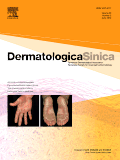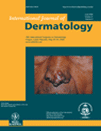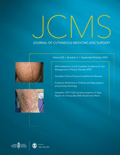
Current Dermatology Reports
Scope & Guideline
Exploring the forefront of dermatological science and patient care.
Introduction
Aims and Scopes
- Pediatric Dermatology:
A significant focus on dermatological issues specific to children, including conditions like atopic dermatitis and the role of food allergies, reflecting a growing awareness of pediatric needs in dermatology. - Innovative Treatment Approaches:
Emphasis on the latest advances in treatment modalities, such as biologics, immunotherapy, and regenerative medicine, showcasing the evolution of therapeutic strategies for various skin conditions. - Interdisciplinary Management:
Highlighting the importance of collaborative care in managing complex dermatological issues, particularly in inpatient settings, thereby promoting a holistic approach to patient care. - Teledermatology:
A growing area of focus that addresses the delivery of care through digital platforms, particularly in underserved regions, thus improving access to dermatological services. - Emerging Technologies in Dermatology:
Inclusion of studies on technological advancements, such as artificial intelligence and novel diagnostic tools, which are reshaping the landscape of dermatological diagnosis and treatment.
Trending and Emerging
- Artificial Intelligence in Dermatology:
A significant increase in publications examining the role of artificial intelligence in diagnosis, treatment decision-making, and health equity, reflecting the growing integration of technology in healthcare. - Management of Hidradenitis Suppurativa:
A noticeable trend in the exploration of management strategies for hidradenitis suppurativa, indicating a heightened awareness of this complex condition and the need for comprehensive care approaches. - Patient-Centered Care and Safety:
Emerging emphasis on patient safety and satisfaction in dermatological practices, particularly in inpatient settings, suggesting a shift towards prioritizing patient experience and outcomes. - Teledermatology and Remote Care:
An increasing focus on teledermatology, particularly in the context of the COVID-19 pandemic, underlines the importance of remote care solutions and their impact on accessibility and efficiency in dermatological services. - Innovations in Wound Care:
Growing attention to advancements in wound care management, including the use of stem cell therapy and novel dressing techniques, indicating a trend toward improving healing outcomes and patient management.
Declining or Waning
- Traditional Therapies for Common Conditions:
There is a noticeable reduction in papers discussing conventional treatments for common dermatological conditions, suggesting a shift towards exploring more innovative and advanced therapeutic options. - In-depth Reviews on Dermatological Pathophysiology:
Fewer publications are dedicated to detailed pathophysiological mechanisms of skin diseases, possibly indicating a trend towards practical management and treatment-focused research instead. - Cosmetic Dermatology Topics:
Interest in cosmetic dermatology, including aesthetic procedures and skin care products, appears to be waning in favor of more clinically relevant topics that prioritize patient health outcomes. - Occupational Dermatology:
While still relevant, publications specifically focusing on occupational dermatitis and related issues have decreased, possibly overshadowed by broader discussions on skin health and systemic treatments. - Global Health Issues in Dermatology:
There seems to be a decline in research addressing global health disparities in dermatology, which may indicate a narrowing of focus towards more localized or specific issues.
Similar Journals

Dermatologica Sinica
Connecting Global Minds in Dermatological AdvancementsDermatologica Sinica, published by Wolters Kluwer Medknow Publications, is an esteemed open-access journal in the field of dermatology that has been disseminating critical research since its inception in 2005. With an E-ISSN of 2223-330X and an ISSN of 1027-8117, this journal presents a platform for researchers, clinicians, and students to share cutting-edge findings and advancements in dermatological science. As of 2023, it proudly ranks in the Q2 category of dermatology journals and holds a notable position at rank #62 out of 142 in the Scopus Medicine - Dermatology category, placing it in the 56th percentile for impact. The journal transitioned to an open-access model in 2016, enhancing accessibility and visibility for groundbreaking studies worldwide. With a commitment to fostering innovation in the dermatological community, Dermatologica Sinica aims to advance the understanding and treatment of skin diseases while encouraging scholarly dialogue among practitioners and researchers across the globe.

EXPERIMENTAL DERMATOLOGY
Pioneering Insights into Skin BiologyEXPERIMENTAL DERMATOLOGY, published by WILEY, is a leading journal in the fields of Biochemistry and Dermatology, with impressive rankings including Q1 status in both categories as of 2023. With its ISSN 0906-6705 and E-ISSN 1600-0625, the journal offers a reputable platform for disseminating cutting-edge research and insights into skin biology and related health issues. As a pivotal resource for professionals, researchers, and students alike, EXPERIMENTAL DERMATOLOGY includes a broad scope of topics, fostering a deeper understanding of dermatological conditions and enhancing new therapeutic strategies. The journal’s distinguished performance is highlighted by its Scopus rankings, which place it at the 91st percentile in Medicine-Dermatology and the 65th in Biochemistry. While not an open-access publication, the journal remains committed to ensuring the accessibility of crucial developments within the dermatological community worldwide, facilitating the advancement of both clinical practice and academic inquiry.

VETERINARY DERMATOLOGY
Exploring the latest breakthroughs in veterinary dermatological care.Veterinary Dermatology is a prestigious peer-reviewed journal dedicated to advancing the field of veterinary dermatology, published by Wiley. With a longstanding commitment to disseminating high-quality research since its inception in 1990, this journal has garnered significant recognition, achieving a commendable Q1 ranking in the Veterinary (miscellaneous) category for 2023 and ranking #42 out of 194 in the General Veterinary category on Scopus, placing it within the 78th percentile. Although it operates primarily on a subscription basis, the journal offers vital insights into the latest developments, clinical practices, and case studies in veterinary skin disorders. By serving as a crucial platform for researchers, veterinary professionals, and students, Veterinary Dermatology empowers its audience with the knowledge necessary to enhance animal healthcare and well-being across diverse environments. With its focus on cutting-edge research and its contribution to the global veterinary community, this journal remains an indispensable resource for those dedicated to the field.

BRITISH JOURNAL OF DERMATOLOGY
Pioneering research in skin health and disease.The British Journal of Dermatology, published by Oxford University Press, stands as a premier platform for advancing the field of dermatological research and clinical practice since its inception in 1892. With a strong commitment to disseminating high-quality research, this esteemed journal is currently ranked in the Q1 category for both Dermatology and Miscellaneous Medicine in 2023, reflecting its influential position in the academic landscape. As the leading journal in its field, it enjoys a robust Scopus ranking of #1 out of 142 in dermatology, placing it in the 99th percentile globally. The journal covers a wide scope of subjects pertinent to dermatology, including clinical trials, treatment innovations, and epidemiological studies, making it an essential resource for researchers, healthcare professionals, and students alike. Although it is not an open-access publication, it ensures a broad reach through institutional subscriptions, fostering knowledge exchange across the global dermatological community. Based in the heart of the United Kingdom, the British Journal of Dermatology continues to play a crucial role in shaping the future of skin health and disease management.

Turkderm-Turkish Archives of Dermatology and Venerology
Advancing Knowledge in Dermatology and VenerologyTurkderm - Turkish Archives of Dermatology and Venerology, published by GALENOS PUBL HOUSE, serves as a vital platform for the dissemination of innovative research and advancements in the fields of dermatology and venerology. With an Open Access policy implemented since 2002, this journal aims to provide free and unrestricted access to significant findings, ensuring that vital information reaches a global audience. Based in Turkey, the journal has positioned itself as an important resource for professionals, researchers, and students alike, despite currently being categorized in Q4 of both Dermatology and Infectious Diseases as per the 2023 metrics. Although it faces competition in the rankings, with a Scopus standing of #131 in Dermatology and #331 in Infectious Diseases, its dedication to advancing knowledge in these critical health areas is unwavering. The journal continually invites original research, reviews, and case studies that enhance clinical practices and foster understanding in the dermatological community.

INTERNATIONAL JOURNAL OF DERMATOLOGY
Unveiling the latest in dermatological innovations.The INTERNATIONAL JOURNAL OF DERMATOLOGY, published by WILEY, stands as a premier scholarly platform in the field of dermatology, with a notable impact factor that affirms its quality and renown. Established in 1963 and converging through to 2024, this journal is recognized as a Q1 category publication, ranking in the top 20% of journals within the dermatology field according to the Scopus ranking system, where it occupies the 28th position among 142 journals. This reflects its dedication to advancing the understanding and treatment of skin diseases, making it a vital resource for researchers, healthcare professionals, and medical students alike. Although it does not provide open access options, articles published in this journal cover a broad range of dermatological topics, ensuring that it serves as a comprehensive and authoritative source for cutting-edge research and clinical practices. With its rigorous peer-review process and commitment to high standards, the INTERNATIONAL JOURNAL OF DERMATOLOGY remains indispensable for those engaged in dermatological science and practice.

JOURNAL OF CUTANEOUS MEDICINE AND SURGERY
Empowering professionals with cutting-edge research in dermatology.The Journal of Cutaneous Medicine and Surgery is a premier publication in the fields of dermatology and surgery, dedicated to advancing the scientific understanding of skin-related conditions and surgical techniques. Published by SAGE Publications Inc, this esteemed journal features a rich repository of peer-reviewed research, reviews, and clinical studies, ensuring that it remains at the forefront of dermatologic and surgical innovation. With an impressive impact factor and a ranking in the top quartile (Q1) of both dermatology and surgery categories for 2023, it is recognized as a vital resource for professionals, researchers, and students alike. The journal has consistently made significant contributions to the knowledge base that guides clinical practice and surgical decision-making, fostering a deeper understanding of the complexities involved in cutaneous medicine. For comprehensive updates, researchers can access this journal through SAGE’s platform, which supports the dissemination of high-quality research findings to a global audience.

Actas Dermo-Sifiliograficas
Unlocking the Future of Skin Research and PracticeActas Dermo-Sifiliograficas, published by Elsevier España, stands as a pivotal resource in the realms of dermatology, histology, and pathology and forensic medicine. With its ISSN of 0001-7310 and E-ISSN 1578-2190, this esteemed journal has transitioned to an Open Access model since 2020, facilitating broader dissemination of impactful research. Operating from its Madrid headquarters, it has been a vital platform for scholarly exchange since its inception in 1945, continuing through its converged years until 2024. The journal holds a Q3 ranking in dermatology, histology, and pathology and forensic medicine as of 2023, reflecting its relevance in the academic community where it ranks 79th in dermatology and 126th in pathology among its peers. With a commitment to advancing knowledge and practice in its fields, Actas Dermo-Sifiliograficas serves as an essential repository for researchers, professionals, and students seeking to engage with the latest findings and innovative perspectives in skin and disease research.

AUSTRALASIAN JOURNAL OF DERMATOLOGY
Elevating dermatological research and practice.Australasian Journal of Dermatology is a leading publication in the field of dermatology, issued by Wiley since 1951, and reaching an audience of researchers, clinicians, and students interested in the latest advancements and practices in skin health. With an ISSN of 0004-8380 and an E-ISSN of 1440-0960, this journal stands out with its Q2 ranking in both Dermatology and Miscellaneous Medicine, positioning it within the top 61st percentile of its category according to Scopus. Although it does not provide Open Access options, Australasian Journal of Dermatology is committed to disseminating high-quality research that informs clinical practices and promotes scholarly dialogue. By publishing rigorous and peer-reviewed articles focused on various aspects of dermatological science, the journal plays a pivotal role in enhancing the dermatology community's understanding of skin conditions and treatments, making it an invaluable resource for professionals and students alike.

SKIN RESEARCH AND TECHNOLOGY
Unveiling the Latest Advances in Skin Health Research.SKIN RESEARCH AND TECHNOLOGY, a distinguished publication by Wiley, stands at the forefront of dermatological science, emphasizing innovative research and technological advances in skin health. With an ISSN of 0909-752X and an E-ISSN of 1600-0846, this journal serves as a vital platform for researchers and professionals to present their findings and engage in discussions surrounding skin biology, clinical practices, and therapeutic technologies. As evidenced by its respectable Q2 ranking in the dermatology category for 2023 and a Q3 status in miscellaneous medicine, the journal attracts a broad readership and contributes significantly to the field. Housed in the United Kingdom with publications spanning from 1995 to 2024, SKIN RESEARCH AND TECHNOLOGY continues to foster innovation and knowledge dissemination in skin-related research. While its Access options are not open, the impact of the journal remains prominent, appealing to academic professionals and students eager to explore emerging trends and advancements in dermatological studies.